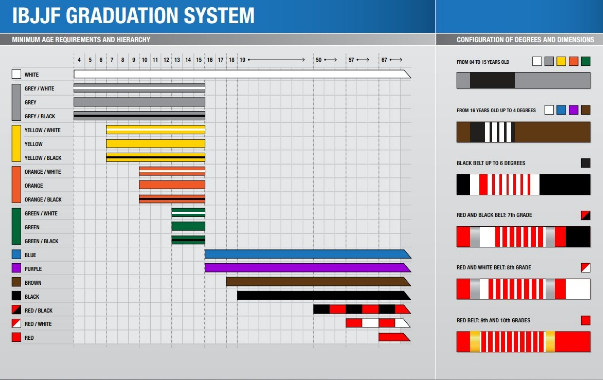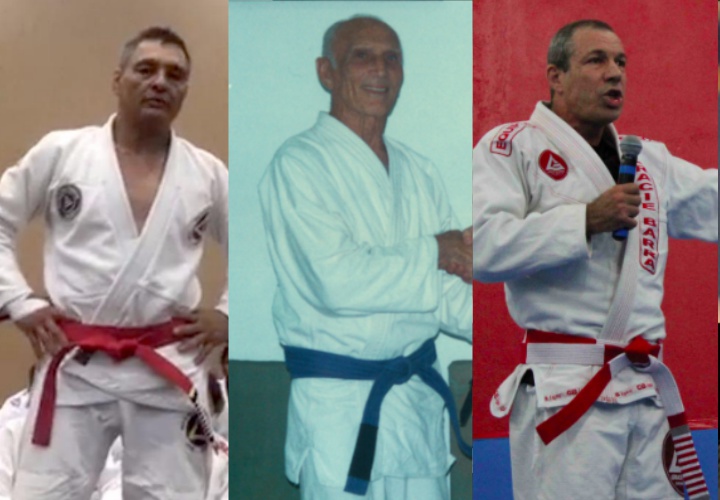In BJJ, few published guidelines or standards determine when a practitioner is ready for promotion; the criterion is generally determined by individual instructors and/or academies.
There are actual 6 distinct belt systems used in BJJ and each one is different.
The IBJJF, which is leading BJJ federation, maintains an extensive graduation system that takes into account time-in-grade and membership standing, but makes no mention of specific performance or skill requirements. When instructors or academies comment on the criteria for promotion, the most widely accepted measures are the amount of technical and conceptual knowledge a practitioner can demonstrate, and performance in grappling (randori) within the academy and/or competition.
Technical and conceptual knowledge are judged by the number of techniques a student can perform, and the level of skill with which they are performed in live grappling, allowing smaller and older practitioners to be recognized for their knowledge, although they may not be the strongest fighters in the school. Brazilian jiu-jitsu is a distinctly individual sport, and practitioners are encouraged to adapt the techniques to their body type, strategic preferences, and level of athleticism. The ultimate criterion for promotion is the ability to execute the techniques successfully, rather than strict stylistic compliance.
From Helio Gracie’s son, red belt Relson Gracie about the traditional belt system of Gracie Jiu-Jitsu, that was used by Carlos and Helio Gracie, from this article:
With the belts, as a teacher, among his 20 to 50 years he always wore the navy blue belt and his students all wore white belts. Him as well as Carlos Gracie, never wore the black and red/black belts. Changed from navy blue belts straight to red belt – Grand Master. Between the years of 1961 and 1962 Helio Gracie created the solid colors scheme on the belts. One of the main reason why he likes the white Gi’s.
For people/students under 16 years of age, the colors are white, yellow, orange and green. For people/students over 16 years of age, the colors are white, blue, purple, brown and black. Once earning the black belt, after 20 years of teaching Helio Gracie Jiu Jitsu, you would then change to the red/black belt. Another 20 additional years of teaching it, you would then achive the red belt known as the Grand Master.
This system of solid colors in the belts was created to separate the levels of students in class and competitions. Also, to differentiate from the martial arts of Judo, Helio create for his belts system the 10 cm long band to be installed at one end of the belt and its stripes. For the yellow, orange, green, blue, purple and brown belts, to use a black color band. For the black belt only, a red color band. For the students under 16years of age, 3 stripes and for the ones over 16 years of age, 4 stripes. He did not use the black band and stripes on the white belts. And I have always wanted to follow his system.
At my association however, some instructors promote the black band and stripes at the white belts to incentive the students and I did not oppose to their idea.
Tony Pacenski in this article came up with a very interesting diagram showing the belt ranking system used by the 5 main BJJ federations:

The traditional Gracie Jiu-Jitsu academy Carlos and Helio Gracie:

Royce Gracie system:
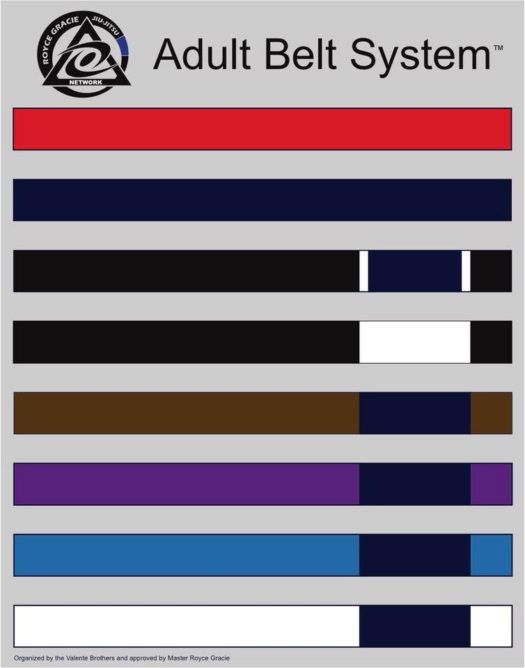
The Jiu-Jitsu Global federation (founded by Rickson Gracie)
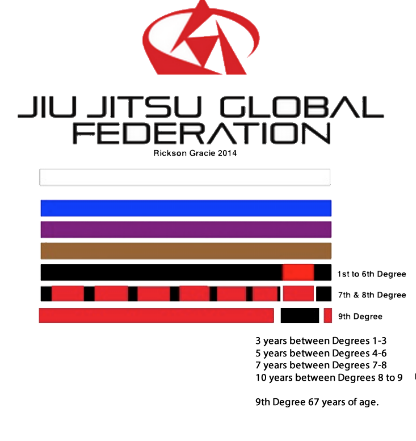
The Federation of Jiu-Jitsu of Rio de Janeiro (lead by Robson Gracie)

The BJJ federation created by Ivan and Jose Gomes
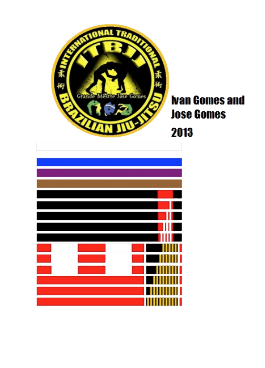
The IBJJF:
